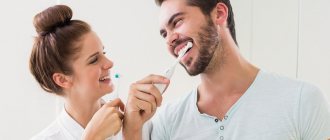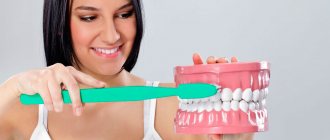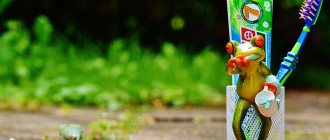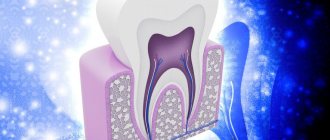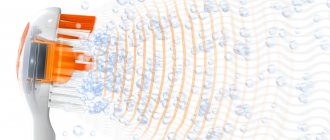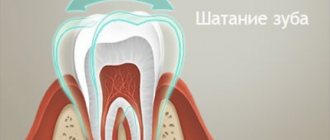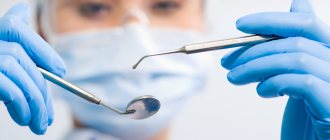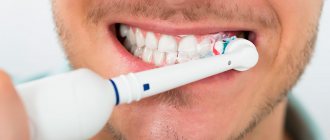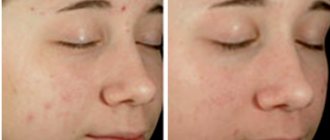People who respect themselves and others are raised from childhood to constantly monitor and care for their teeth and mouth. They know that beautiful white teeth and pleasant breath affect health, personal life, and help build a successful career.
And in order for everything to always be in order in your mouth, you need to brush your teeth regularly - this has been known since childhood. The most popular item for oral care is an ordinary toothbrush. Parents teach them to use it from a very early age. However, even they do not always know the criteria for choosing a much-needed tool. They often do not know how to care for it and how often to change it.
Those who do not know the answers to these simple and important questions are very likely to risk damaging both their tooth enamel and gums. There is a high risk of getting a bunch of incurable diseases, and not only the mouth, but also other organs will be affected. To prevent this from happening, you should pay attention to some nuances when buying a toothbrush.
Brush selection methods
Typically, toothbrushes are purchased in modern perfume stores or pharmacies. When choosing, many people look at price and appearance and focus only on them, but these are by no means the main indicators. What should you pay attention to, how to choose correctly?
The first factor that you should take a close look at is the material used to make the bristles. There is an opinion that natural bristles are the best option. But this is far from true. Bacteria accumulate on it, leading to oral diseases. The best one is artificial: it has harder fibers, and the tips do not scratch the enamel, destroying it.
Information about the stiffness of the bristles is written on the packaging or the brush itself. According to the degree of hardness, brushes can be
- Very soft. Recommended for little ones or those with extremely sensitive teeth.
- Soft. Designed for older children 6–13 years old, recommended for adults with oral health problems
- Average. Good for teenagers.
- Tough. These brushes are used by adults with absolutely healthy teeth. Before use, it is recommended to consult a dentist, otherwise there is a risk of damage to the gums and enamel.
Kinds
Today there are several types of brushes for delicate dental care.
Each type has its own advantages and disadvantages . In any case, the choice remains with the consumer.
Regular
The length and shape of the ends of the pile and the number of tufts are an important selection point.
Sharp bristles are suitable for removing plaque in hard-to-reach places , but people with fragile enamel and weakened gums should not buy them.
Dental appliances labeled soft or sensitive are the right choice in this case. Their soft bristles are rounded and avoid scratching.
Note! For daily dental care, it is better to choose a soft brush with frequent bristles.
Combined
These dental instruments are available both conventional and electric. Their heads are equipped with soft bristles on one side and hard (elongated) bristles on the other.
Products of this kind are quite
effective and at the same time practically safe.
Electrical
They have an original design and are multifunctional .
Under the influence of current, the head of this model rotates intensively, which allows you to effectively remove plaque without driving it under the gum .
However, electric toothbrushes can damage sensitive enamel and gum tissue . To prevent this from happening, the kit comes with a nozzle with soft bristles.
When the heads wear out, you can replace them with new ones.
Ultrasonic
Know! These toothbrushes are similar in appearance to electric ones. They are a new word in technology and have not yet become widespread.
The impact occurs due to low-frequency wave vibrations, which effectively remove the oldest plaque.
Ultrasonic attachments
are strictly contraindicated for: pregnant women , people with neoplasms in the oral cavity, persons with impaired keratinization of the mucous epithelium .
Ionic
Brushes of this kind have appeared quite recently. The operating principle is based on the rotation of a rod coated with titanium dioxide molecules.
When it reacts with liquid (saliva), the substance attracts hydrogen ions . are the ones who kill pathogenic bacteria and eliminate the acidic environment.
An ionic toothbrush allows you to save on the purchase of toothpaste.
Important to remember! It is contraindicated for smokers: nicotine, which reacts with hydrogen ions, has a destructive effect on the mucous membrane.
For cancer patients, as well as people with oral fluid deficiency syndrome, the use of this brush is not recommended.
Using water
How to make a toothbrush soft? Often people purchase a brush with the required parameters, but after some time it becomes too hard, rubs the gums and causes discomfort. What can you do in this case, without running back to the store for a new copy? There are several tools that can make your toothbrush soft and brushing your teeth a pleasant and comfortable experience.
The easiest and most affordable way to soften a brush is with ordinary tap water. How to do it? Follow the instructions below:
- Under running hot water - there is absolutely no need for it to be boiling water. Otherwise, the plastic bristles will simply melt. You need to hold it with the bristles up for several (2-3) minutes.
- Then put hot water in a glass or jar and leave the brush there for 5–7 hours. The best thing is to do this in the evening after brushing your teeth before going to bed.
- In the morning, when you start brushing your teeth, you may find that the bristles have become soft.
Regularity is the key to effectiveness
Cleaning is of utmost importance. This hygiene procedure must be carried out regularly.
Moreover, if you perform care only once a day in the morning or evening, it will not be possible to eliminate the harmful effects of microorganisms. They actively multiply on the remains of consumed food and have an extremely negative effect on the condition of dental elements.
Without proper oral care, plaque appears, which gradually hardens and becomes tartar. Stone formations put pressure on the gum tissue, provoking the occurrence of an inflammatory process.
In addition, neglect of the rules of oral hygiene causes caries. This disease is fraught with serious consequences. In addition to pain, unpleasant odor and dental problems, various pathologies can develop in the human body. Since the rapid growth of the number of bacteria on damaged elements leads to their spread to internal organs. Because of this, numerous diseases appear.
To avoid such developments, it is necessary to clean the plates daily (2 times a day). You need to devote a sufficient amount of time to this process. Do not forget that neglect of your own health is unacceptable.
Using hydrogen peroxide
Another way to soften your toothbrush is to use hydrogen peroxide. It is best to take a three percent solution. This is usually present in the first aid kit of anyone who takes care of their health.
Peroxide is poured into a glass or mug one third full, and a brush is placed in it for about 5–7 minutes. Then it is thoroughly washed. That's it, now you can use it.
Rinse aid
Surely a considerable number of people use mouthwash. It can also be a good option for softening your toothbrush.
This is done as follows:
Half a glass of rinse aid is poured - this amount is enough for the brush head to be completely immersed in it. After which a brush is placed in the solution. Depending on the stiffness of the bristles, the duration of the event ranges from two to three minutes to half an hour. The effectiveness of this technique has long been tested and proven - the villi will become soft and pleasant to the teeth.
Vinegar
Many people soften their paint brushes by soaking them in vinegar. If this method softens paint brushes, then it will work for toothbrushes. Another method to make your toothbrush soft is to soak it in a vinegar solution or pure vinegar. Any will do - table, apple or wine. But, as a rule, most people have a regular dining room in their kitchen.
How to do it?
- Vinegar is poured into a vessel (preferably transparent). You don't need a lot - just enough to completely hide the stubble.
- The dishes are placed in the microwave and heated - it is not necessary to boil, just make the liquid warm.
- Dip a brush into vinegar and leave for half an hour.
- After the appointed time, the brush is pulled out and rinsed under running water.
- To achieve a better effect, the bristles can be kneaded with your hands.
Mouthwash
Take a clean glass and fill it with mouthwash. There is no need to fill to the top. The main thing is that when you lower the brush there, the bristles are completely hidden. You can even soak old brushes that you haven’t thought about for a long time and that have already dried out in this way.
Mouthwash
Personally, I tried this method on myself. I had a couple of brushes lying around at home that I took out of boxes and forgot. They weren't used, so I didn't throw them away. I took about 100 ml of liquid, poured it into a cup, and left the brush in it until the morning. Honestly - just like in advertising - soft and comfortable.
Using mouthwash
Aloe vera
Another way to make your toothbrush soft is to use aloe vera extract. It is usually used to moisturize and soften the skin. It will also quite successfully soften the bristles of the brush.
The procedure is carried out in three stages:
- The glass is filled one third with extract.
- Place the brush in the dish so that the head is completely hidden.
- After fifteen minutes, the brush is pulled out and rinsed.
That's it, she's ready to brush her teeth again.
What mistakes provoke the appearance of caries?
Not all people use hygiene instruments correctly or do not take into account other important nuances of care. In order to take proper care and figure out how to brush your teeth with a toothbrush, you need to be aware of common omissions.
Long-term use of a hygiene product
Any product wears out over time, fails, and becomes unsuitable for use. If you continue to use the product after it has become unusable, it will not be possible to achieve effectiveness. Old, broken bristles are no longer able to effectively fight plaque and harmful microorganisms. Essentially, there is absolutely no benefit from such cleaning. Dental doctors recommend replacing hygiene instruments at least once every 3-4 months.
Excessive pressure on the brush
There is no need to put too much pressure on it. This aggressive treatment will not remove more plaque or bacteria. For high-quality cleaning of the oral cavity, gentle, gentle movements are sufficient. Otherwise, you will achieve only one thing - damage the gum tissue and provoke the appearance of an inflammatory process. Which, in turn, can cause the development of various diseases.
Carrying out the procedure immediately after eating
Yes, in this regard, too, not everything is simple. Experts advise waiting at least 1 hour after eating before starting cleansing. This should be remembered, especially if you ate foods containing natural acids (citrus fruits) for breakfast/dinner. The acidic environment softens the enamel layer; brushing during this period can harm the condition of the tooth enamel.
In cases where you urgently need to freshen your mouth, it is better to use plain water (rinse) or chewing gum.
Improper storage
There is no need to store personal hygiene products in a special container. In an enclosed space, pathogenic microorganisms multiply many times faster. Then all this multitude of microbes on the bristles will be transferred to the mouth. Therefore, the best option is to hold the item vertically in the open air.
Common salt
How to make a toothbrush soft at home? There is another very accessible and simple way. In order to try it, you will need simple table salt:
- A thick saline solution is made - the more salt, the better.
- A brush is dipped into the solution and left for several hours. You can leave it overnight.
- In the morning, the brush is washed and used for its intended purpose. After such a “bath” she will become soft and pleasant.
Electrical Products
Electrical products used for oral hygiene have recently been in great demand; an increasing number of people are trying to acquire “vibrating leaders” for themselves. But in fact, their popularity is not particularly supported by anything. They remove plaque from the surface of the teeth a little better than the manual ones we are used to, but there is a risk of damage to the fillings, crowns and other prostheses present in the mouth; over time, they become loose. In addition, massage of the gums with a mechanical toothbrush must be done not while it is vibrating, but in the off state, which can be done with a regular brush.
All hygienic electrical appliances are divided into:
- classic options that are equipped with a rotating element;
- sound, they are characterized by their oscillatory effect when cleaning the surface of the teeth;
- ultrasonic models that produce strong vibrations.
